Sudoku. A puzzle that many newspapers publish everyday. And here is one from today’s newspaper.
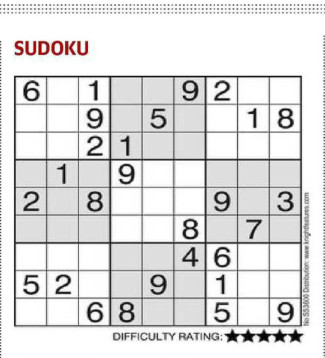 The Hindu
The Hindu
Its a 9×9 square with six 3×3 square grids. You have to fill the numbers 1 to 9 in each row (horizontal) and column (longitudinal) and in each 3×3 square only once.[1]
Sudoku is related to the Latin Square. Which is an n×n array filled with different ‘symbols’ occurring only once in each row and column.
So any solution of Sudoku is a Latin Square. Because it will just have different permutation of numbers 1-9 filled in 9 different rows and columns.
Sudoku can be solved by the use of numbers given in each row and column and searching for those cells where only one number is possible. But many a times different solutions are possible for a given Sudoku puzzle.
And it has been proved that if a Sudoku has less than 17 given numbers it cannot be solved uniquely.
Dr. James Grime explains the proof in this Numberphile video-
There are different types of Sudoku puzzles. Like the Binary Puzzle in which you can only fill 1 and 0 and the number of 1s and 0s should be same in each row and column. Only two same numbers can be filled consecutively. For example, if you filled two 1s you will have to fill 0 on either side.
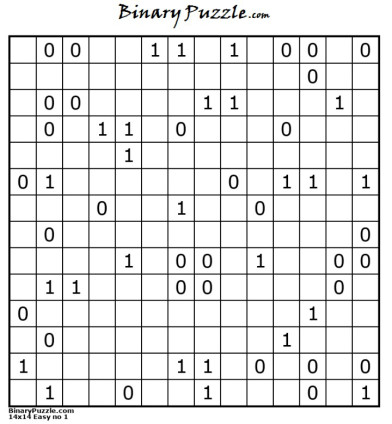 Binary Sudoku Puzzle
Binary Sudoku Puzzle
Another variant is the Stairstep Sudoku which is solved just like normal Sudoku but have zigzag regions instead of square ones.
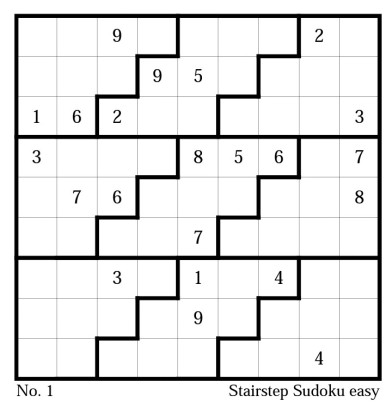
And in the end I would also like to share a Standupmaths video by Matt Parker. In which he gives a problem posed by James Grime:-
Can you find a 10 digit number which is self descriptive. That is it’s first digit tells you how many 0s are there, second digits tells you how many 1s are there and so on to the tenth digit which tells you how many 9s are there.
Solution of sudoku puzzles-
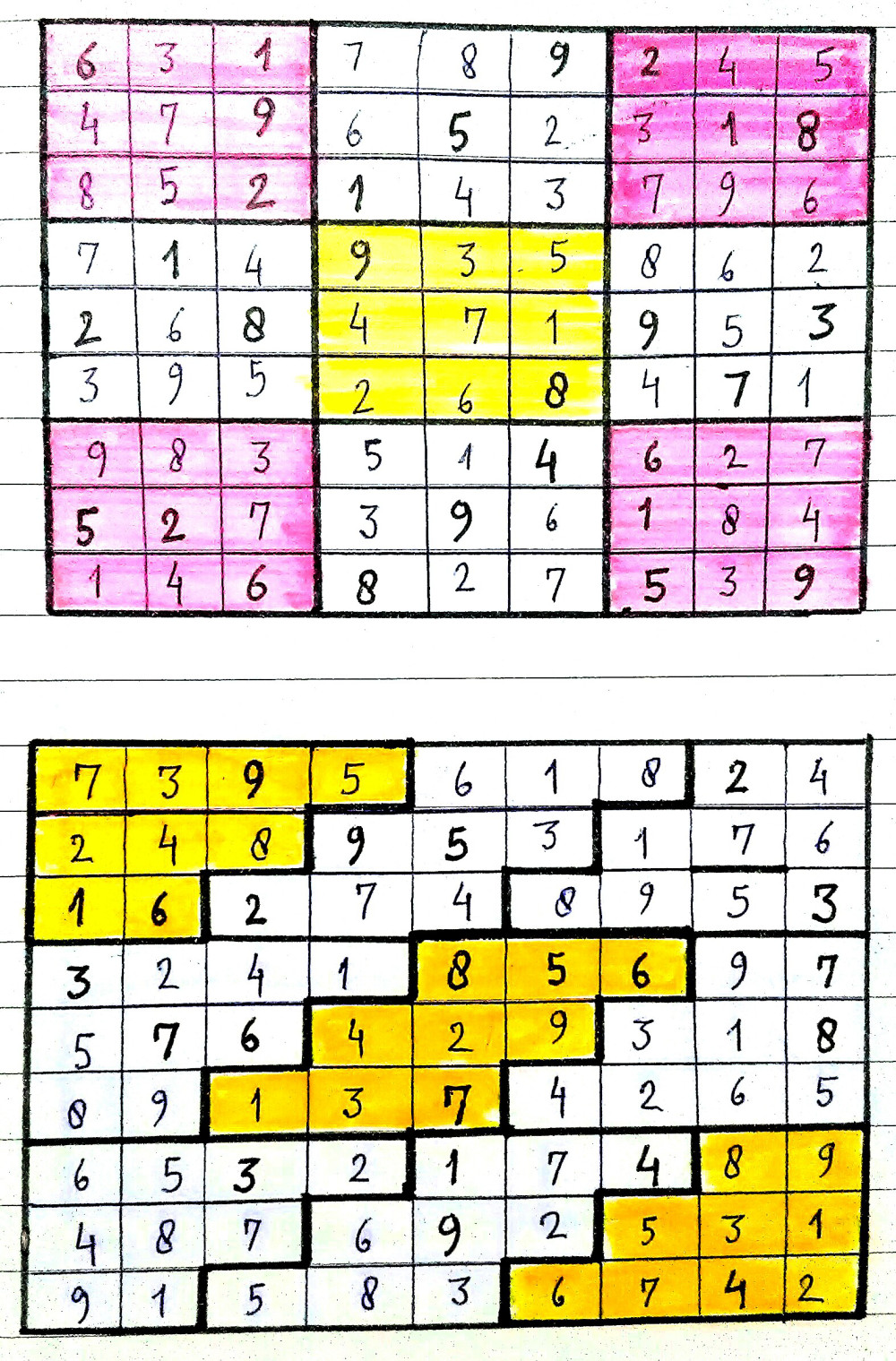
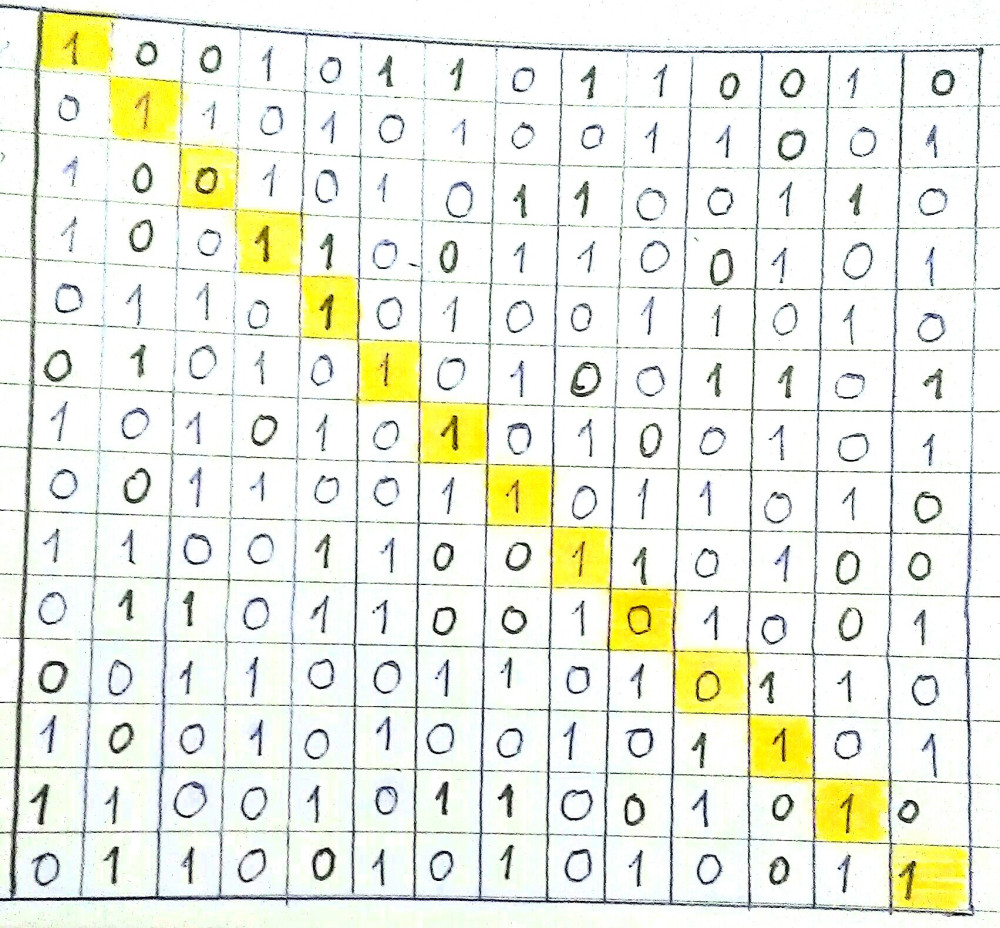
[1] Pegg, Ed Jr. and Weisstein, Eric W. “Sudoku.” From MathWorld–A Wolfram Web Resource. http://mathworld.wolfram.com/Sudoku.html
Advertisements Share this:




